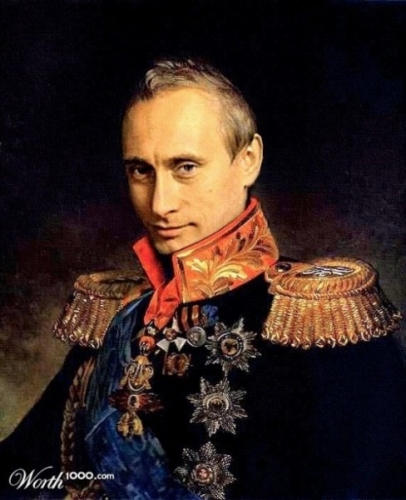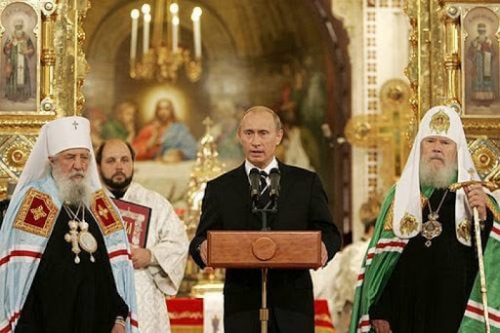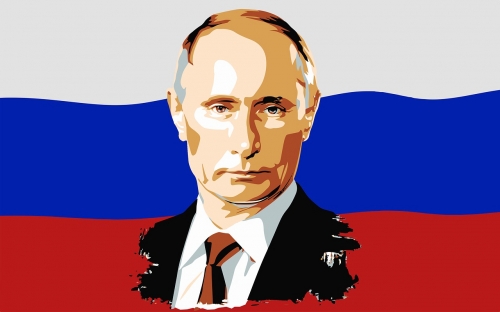Language. We take it for granted. We use it every day after all. It’s an unavoidable tool, necessary one and beautiful. One without which our lives would be diminished. But what happens when the native language of a people is replaced by another? What happens when these same people use this other language more than their own? This is unfortunately what has happened to Gaeilge, or Irish as most people know it. A beautiful tongue, on the brink of extinction.
How sad would it be to let one of our European languages disappear? In the struggle to remind our people at large of their heritage as well as the duty to their children and ancestors to carry on, we cannot forget the crucial aspect of culture, to which language is central. Gaeilge, Irish, is important. To 4 million Irelanders in Ireland. To their diaspora which numbers up to 70 million. To us, Europeans, as another part of the enormously rich tapestry that is our collective culture and history.
Let us not let it happen, eh?
What is the most distinguishing feature of a people, other than genetics? Is it their culture? Their history? Their place in the world, geographically speaking?
It’s their language. Teanga in Gaeilge
The foremost of differences, aside one of the easiest to observe.
Language is the way humans interact with one another. We convey meaning and ideas and thoughts through language. It is one of our most important tools. One of the first we learn as a child.
So what would happen to a people who are undergoing a… change to put it lightly, if their language was to disappear? Surely they would lose that most distinguishing of features? They may not even be able to call themselves a people, or a nation, any longer.
A History of Strife & Survival
It is no secret that the history of Humankind is also a history of warfare, the Irish are no exception to this rule. In their case, the battles ware against the Vikings, the Normans, and the English, or British as they would later call themselves… literal centuries of wars, struggles, revolutions…
Around 795 AD the Vikings came to Ireland from Scandinavia with the aim to steal and pillage Irish treasure and women.
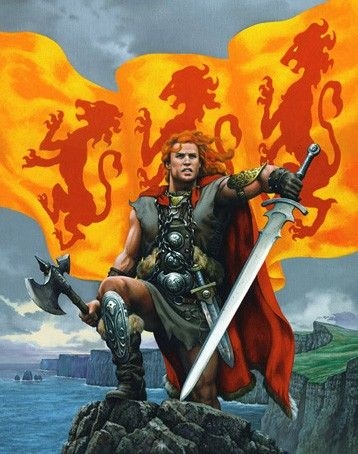
By the end of the 10th century, Viking power was diminishing. The Viking era in Ireland is believed to have ended by 1014 when a large Viking Army was defeated in Clontarf by Brian Bórú, who is considered as Ireland’s greatest King.
In the 12th century, the Normans arrived in Ireland which began Ireland’s 800-year struggle with dear old England. In the 1600s the Ulster Plantation occurred in which Irish land was taken from Irish landowners and given to English families. This plantation of Ulster divided the country and this division still remains to this day. Then came Cromwell who arrived in Dublin in August 1649 and was intent on eradicating, as he saw it, the Irish problem once and for all. He despised Irish Catholics and together with his army he slaughtered and murdered, burnt houses and unplanted crops, leaving a trail of death and destruction across the Emerald Isle. He stole Irish land and granted it to moneylenders and English soldiers. He pushed most of the Irish and mainly Catholics, to the far side of the island where the land was poor and infertile. About a third of Catholics died through fighting, famine and disease.
The next 150 years saw more bloodshed and carnage on Irish soil between the Irish and English.
One of the biggest events in Ireland’s history over the last 200 years was ‘The Great Famine’. More than one million Irish died and more than one million emigrated due to the failure of their main crop, the potato, during the famine which lasted from 1845 to 1852. There are tales of roads strewn with dead Irish men, women and children with green around their mouths in a desperate attempt to quench their hunger by eating grass…
The late 1800s saw another push for Irish independence from England with the rise of Charles Stuart Parnell, one of Ireland’s greatest politicians. The Land League was formed with Charles Stuart Parnell as President. He tried to promote a more political way of dealing with the English. He promoted ‘shunning’, which meant that the Irish should refuse to deal with any landlord who unfairly evicted tenants or any Irish who took up the rent of new available land. This was known as the ‘Land War’. While Parnell never achieved Home Rule (Ireland run by its own independent Irish Parliament) it did lay the ground work for Ireland’s greatest uprising.
In 1916, Easter weekend, the Irish Volunteers and Irish Citizen Army launched an uprising. Britain was in the middle of World War 1. Padraig Pearse, who was one of the leaders of the rising, read the ‘Proclamation of the Irish Republic’ on the steps of the General Post Office (G.P.O) on O’Connell Street in Dublin before the start of the Rising. This uprising was in a sense a failure but lay the groundwork for greater things. The British rounded up its leaders and executed them. These executed later became martyrs.
A new style of guerrilla warfare began, some time later. Bloodshed on Irish streets peaked with the execution of British Intelligence Agents in 1920 and the murder of many Irish, and innocent Irish at that, by the British ‘Black and Tans’. But by 1922, Ireland achieved independence from Britain, except for six counties in the Northern Ireland, which still remains part of Britain today. In 1922, post-boxes were painted green from the traditional British red, road signs were changed to contain both Irish and English language and the Tri-Colour flew high and proud around Ireland. Violence still continued though, with the ‘The Troubles’ in Northern Ireland peaking in the 1970s. Today, Ireland is peaceful with power-sharing in Northern Ireland between the main Catholic and Protestant Parties.
So much struggle and so much bloodshed, to now lose that for which they fought, because of… globalisation? Interconnectedness? The Nihilist plaque that assails the Continent at large?
All of Europe has endured much. It’s what’s made us so strong today. It’s for that reason the current situation is so infuriating. To have survived so much just to give it up for…comfort?
That’s a nay from me.
Language decay following Independence
For much of Irish history, the English ruled Ireland, but Gaeilge, the language, only really began to decline after 1600, when the last of the Gaelic chieftains were defeated. While the Irish language was never banned or persecuted, it was discouraged. English was the official language of rule and business, there was no one to support the Irish language and culture. So, English slowly spread, especially in the East and in Dublin, the capital, while Irish remained strong in the West. By 1800, the Emerald Isle was roughly balanced between the two languages.
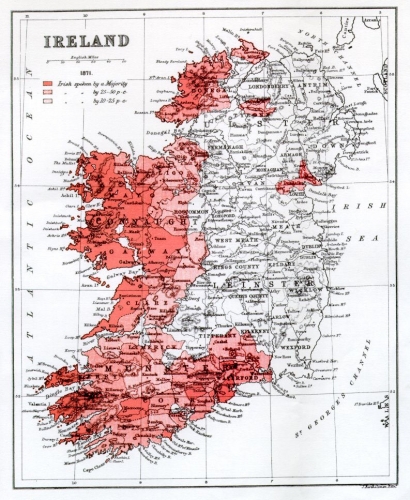
There were two major events that decimated Irish. The first was the Great Famine (1845-50) which hit the Irish speaking West hardest of all, out of a population of 8 million, about a million people died and another million emigrated. From then on emigration became a common part of Irish society as large numbers of Irish left the Isle every year, primarily to English speaking countries like America and Britain. So it was that most Irish people needed to speak English in the event that they would leave home.
English was the language of the future and of economic opportunity; Irish was the past and the language of a poverty-stricken island that couldn’t support them…
The second major event was the advent of education. Beginning in the 1830’s national schools were created across Ireland to educate people through English and Irish was strictly forbidden. While nothing could be done to prevent Irish from being spoken in the home, it was strongly discouraged and shamed. Irish was depicted as an ignorant peasant’s language, whereas English was the language of sophistication and wealth. Poor potato farmers spoke Irish, while rich and successful businessmen spoke English. Other organisations too promoted English, such as the Catholic Church and even Nationalist politicians like Daniel O’Connell. English became the language of the cities while Irish retreated to the most remote and underdeveloped parts of the country.
Languages are strongly subject to economies of scale. This is why immigrant families, if not very careful, lose the knowledge of their tongue, within two generations.
In the Irish example parents taught their children English because that was the language that most people spoke, which caused more people to learn it and so every generation English grew stronger and stronger. Likewise, Irish weakened as fewer people spoke it because few people spoke it which caused fewer still to speak it. It became more and more confined to elderly speakers which discouraged young people and continued the vicious circle. As fewer people spoke it, less people used it for art and literature, which gave people less of a reason to learn it. In short, Irish was/is trapped in a vicious downward spiral.
But there is hope, of course, Irish persists.
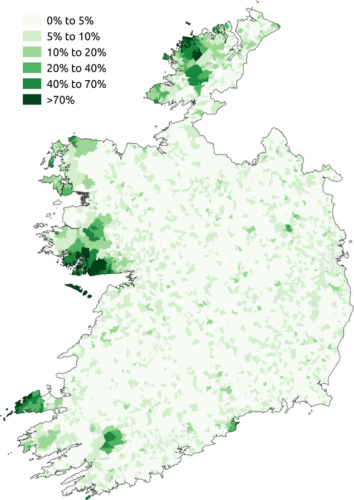
Gaeilge Revived
If we want to revive a language we’re gonna need some people to speak it, no? There have been good sings in recent years!
With some 70 million emigrants from Ireland spread throughout different countries, the Irish born, the Irish descendants and those who became enamoured with Irish culture have worked together in an effort to save the Irish language. Because of the hard work and study from many people all over the globe, in 2008 the Irish government took a nationwide survey to ask its citizens how they wanted to re-establish the nation’s first and official language. The Irish language is now in the process of working its way off the Endangered Languages list.
One of the major supporters dedicated to saving Irish is Foras na Gaeilge. Since 1999, the Foras na Gaeilge took on the responsibility of promoting Irish throughout Ireland. This group developed the Good Friday Agreement, which makes the promotion of the Irish language a joint effort between the Republic of Ireland and Northern Ireland, a major achievement. They were also instrumental in ensuring that Irish was added to the European Charter for Regional and Minority Languages, making it a recognised language at the inception of the European Union.
There are positive developments every year regarding the language, more is required, more pushes and more effort, but the situation is improving and that is a good thing.
The Emerald Isle and above all, its people – na hÉireannaigh (the Irish), will live on!


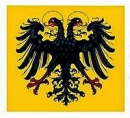
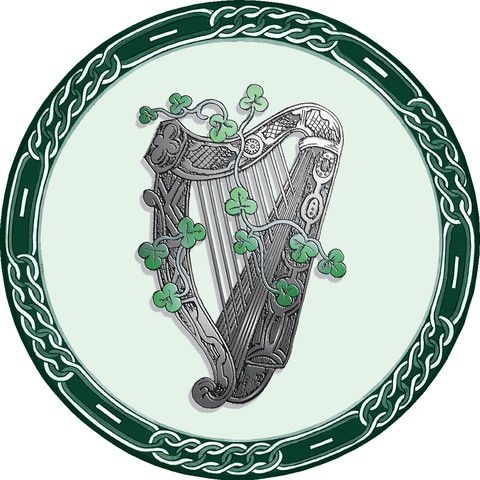

 del.icio.us
del.icio.us
 Digg
Digg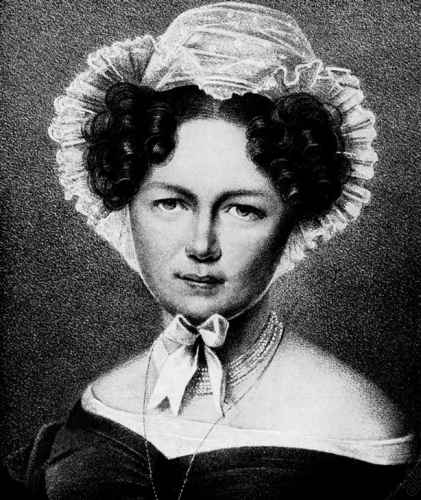
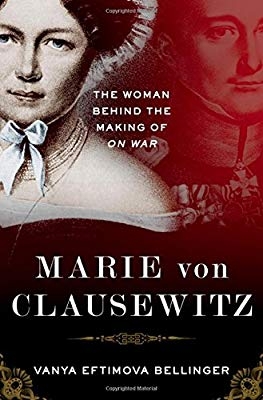 La visione politica dei due è molto simile ed emerge costantemente nelle lettere. Il libro ne segue le tracce nel quadro di quegli anni burrascosi che fu l’inizio dell’800 con le guerre napoleoniche la disfatta di Jena (14 ottobre 1806), la sconfitta e l’umiliazione prussiana che scossero gli animi della coppia (che in quel periodo non era ancora sposata, il matrimonio venne celebrato il 17 dicembre 1810 a Berlino presso la Marienkirche visitabile ancora oggi in pieno centro). Questo permette all’autrice di ricostruire in modo preciso le vicende della Prussia, e in genere dell’Europa di quegli anni, inserendovi quindi la maturazione delle idee politico-strategiche di Clausewitz oltre che ovviamente le vicende amorose dei due.
La visione politica dei due è molto simile ed emerge costantemente nelle lettere. Il libro ne segue le tracce nel quadro di quegli anni burrascosi che fu l’inizio dell’800 con le guerre napoleoniche la disfatta di Jena (14 ottobre 1806), la sconfitta e l’umiliazione prussiana che scossero gli animi della coppia (che in quel periodo non era ancora sposata, il matrimonio venne celebrato il 17 dicembre 1810 a Berlino presso la Marienkirche visitabile ancora oggi in pieno centro). Questo permette all’autrice di ricostruire in modo preciso le vicende della Prussia, e in genere dell’Europa di quegli anni, inserendovi quindi la maturazione delle idee politico-strategiche di Clausewitz oltre che ovviamente le vicende amorose dei due.